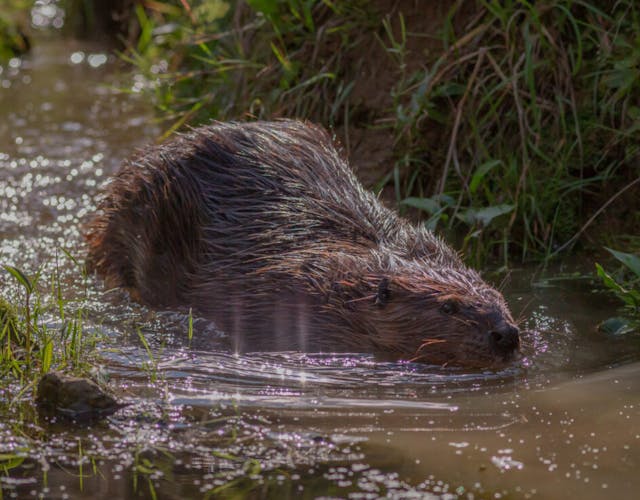Wildlife
Natuurpark Lelystad is home to rare animals like European bison and Père David’s deer. They all have plenty of space in their large enclosures so they can live as they would in the wild. But wild animals also thrive in this natural environment. Throughout the park, you can encounter deer, foxes, otters, and even beavers.


Roe deer
You will see roe deer mainly in the early morning and at dusk. During the day, they often hide among the bushes, where they can quietly chew the cud. Roe deer usually live alone, but in winter they sometimes form groups. The males then lose their antlers. They have a large white spot on their hindquarters. This white rump is particularly noticeable when the deer is startled, acting as a kind of warning signal to other deer.

Carp
In warm weather, you sometimes see carp at the water’s surface. You can recognize them by their large mouths with four filaments. Their food consists mainly of aquatic animals, which they find by stirring up the bottom. A carp can grow up to a meter long and live for as long as forty years.
Spawning
During spawning, several males chase a female. This can sometimes be quite violent in the water.

Red fox
The red fox is related to the dog, but is more the size of a large cat. They are true omnivores, so they eat whatever they can find. This is mainly small mammals, but also birds, insects and fruit. Sometimes they leap into the air with all four legs at once to grab their prey.
Screaming
Winter is the breeding season for foxes. You often hear them yapping or even screaming in the evenings.

Beaver
This largest rodent in Europe was once extinct in the Netherlands. A few captive animals escaped from Natuurpark Lelystad and spread throughout Flevoland. You can recognize the beaver by its flat tail and large orange incisors. They use these to gnaw down entire trees so they can eat the leaves, twigs, and bark. Willows and poplars are favorites.
Beaver tracks
See a chewed or gnawed tree? Or smooth paths on the bank leading to the water? Those are beaver tracks.
Did you know?
Beavers often live in small family groups and build a den from branches and earth. The entrance to such a den is underwater, making them inaccessible to predators.

Otter
Natuurpark Lelystad shelters European otters that cannot survive in the wild. These are animals that have been orphaned at a young age or have been in traffic accidents. But did you know that there are far more wild otters in the park than captive ones? Wild otters are regularly spotted on trail cameras installed in various locations throughout the park, often with several young.
